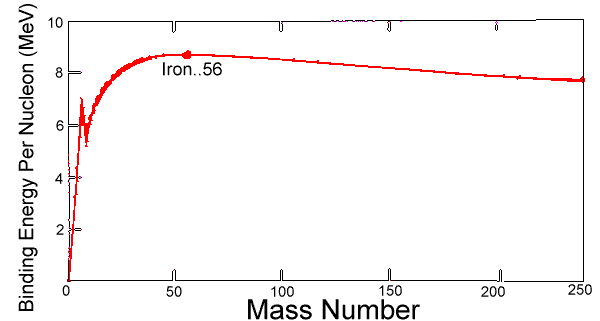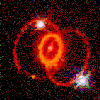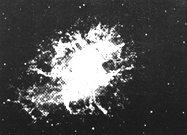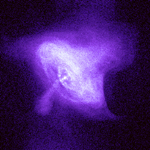|
The Sun Magnetic Fields Optional: Quantum Physics -------------------------- our Galactic Center of Atoms and Nuclei |
The Sun is the source of most of the energy on Earth--the power source for plants, the cause of flows of atmosphere and of water, the source of the warmth which makes life possible. None would exist without it. At the Earth's orbit, neglecting absorption by the atmosphere, each square meter of area facing the Sun receives about 1380 joules per second (nearly 2 horsepower). That quantity is known as the solar constant and sensors aboard NASA's satellites over the 1979-99 interval suggest it varied by only about 0.2%.
See graph here . But what powers the Sun itself? How much longer will it shine, before its fuel runs out? For how long has it given out its energy? The first to consider these questions seriously was the great German physicist Hermann von Helmholtz, who noted in 1854 that the Sun's own gravity could supply an appreciable amount of energy. If the Sun were gradually shrinking--if all its matter was gradually falling towards its center--enough energy could be released to keep it radiating for a fairly long time. He calculated that this source could provide the Sun's energy for times of the order of up to 20 million years. Then radioactivity was discovered, the decay of heavy elements into lighter ones through the emission of fast particles, containing a great deal of energy. As it turned out, it was this energy, from radioactive elements in rocks, that provided the internal heat of the Earth. Radioactivity also allowed new estimates of the age of the Earth, since the amount of accumulated decay products in ores indicated how long the process had been going on. This suggested the Earth was much older than Helmholtz'es estimate, perhaps billions of years old. Could perhaps the new source of internal energy also supply the Sun's needs for such a long time? |

 Stars several times the size of our Sun have enough gravity to crush together not just atoms but even nuclei, compressing all their matter to a sphere perhaps 15 kilometers across. After their collapse they become "neutron stars" consisting only of neutrons (the protons all switching form), giant nuclei as dense as the ones in atoms. A huge amount of energy is liberated in that final collapse which is quite rapid, blowing off the top layers of the collapsing star and also producing elements heavier than iron.
Stars several times the size of our Sun have enough gravity to crush together not just atoms but even nuclei, compressing all their matter to a sphere perhaps 15 kilometers across. After their collapse they become "neutron stars" consisting only of neutrons (the protons all switching form), giant nuclei as dense as the ones in atoms. A huge amount of energy is liberated in that final collapse which is quite rapid, blowing off the top layers of the collapsing star and also producing elements heavier than iron.  As for the "supernova remnant" left over from the collapse, its fate depends on its mass. If the star was not too massive, the remnant (as explained) is a neutron star. It that star originally rotated around its axis, that rotation is enormously speeded up; the remnant of the supernova of the year 1054 (its ejected cloud, the "Crab Nebula," is shown on the left) is spinning at about 30 revolutions per second! Any magnetic field of the original star is also enormously amplified, and associated phenomena can make it beam radio waves. Pulsars, pulsed radio sources with remarkably stable pulsation periods (associated with their rotation) are produced that way. By the way, the Crab Nebula is still expanding;
As for the "supernova remnant" left over from the collapse, its fate depends on its mass. If the star was not too massive, the remnant (as explained) is a neutron star. It that star originally rotated around its axis, that rotation is enormously speeded up; the remnant of the supernova of the year 1054 (its ejected cloud, the "Crab Nebula," is shown on the left) is spinning at about 30 revolutions per second! Any magnetic field of the original star is also enormously amplified, and associated phenomena can make it beam radio waves. Pulsars, pulsed radio sources with remarkably stable pulsation periods (associated with their rotation) are produced that way. By the way, the Crab Nebula is still expanding; 